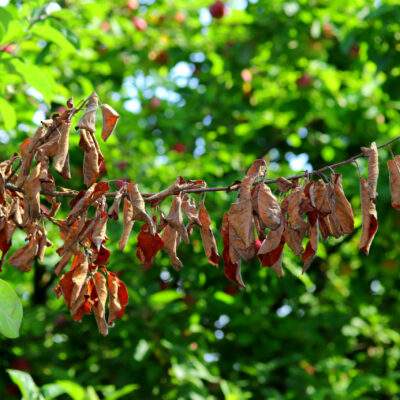Fire Blight
Fire blight is a bacterial disease that affects fruit trees and shrubs, such as apples, pears, and ornamental flowering plants in the Rosaceae family. It is caused by the bacterium Erwinia amylovora, which is found in infected plants and can spread to healthy plants through contaminated pruning tools, insects, or wind-blown rain.
The symptoms of fire blight include black or brown scorched-looking shoots and branches, wilted flowers, and necrosis of the twigs and branches. The affected tissue often takes on a characteristic “shepherd’s crook” shape. The bacteria can enter the tree through open flowers, wounds, or natural openings, such as stomata, and once inside the tree, it can spread through the vascular tissue, causing the tree to become infected.
Fire blight can be difficult to control, as the bacterium can survive in plant debris and can be spread by insects and other animals. Control measures include the removal and destruction of infected plants, the use of antibiotics or bactericides, and the practice of good hygiene, such as sterilizing pruning tools and avoiding overhead irrigation. It is important to properly identify the disease before attempting to control it, as other diseases and pests can cause similar symptoms in plants.

